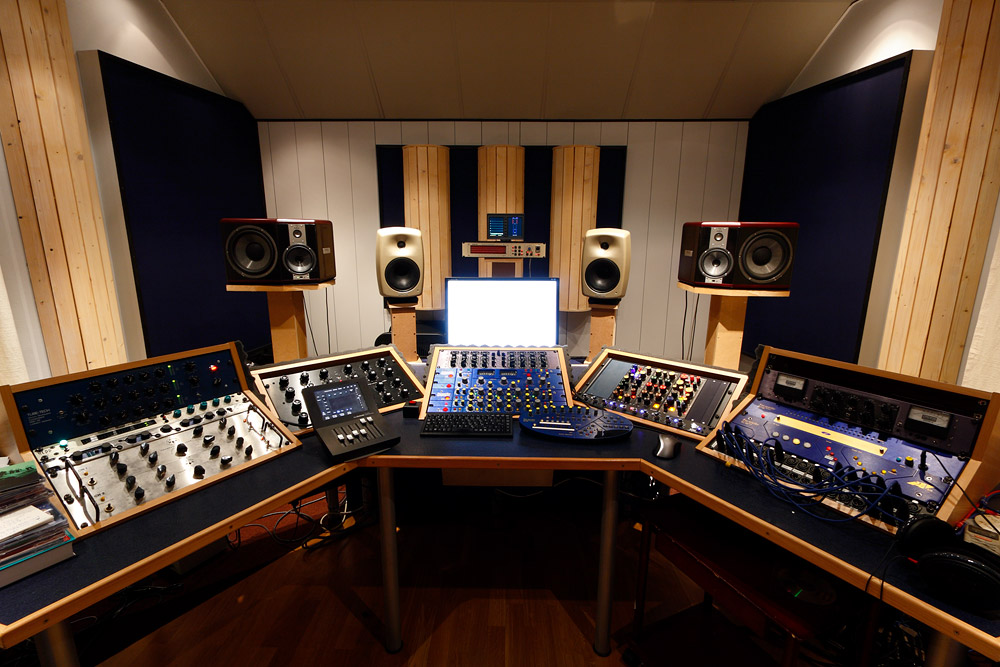Song mastering is the final step in getting your tracks ready to release. What a mastering engineer does differently than a mixer is make final, sometimes very subtle, tweaks to make something sound polished and “commercial.” You can learn how to master a song or album yourself, but there’s a reason we trust dedicated engineers! Mastering is an audio discipline on its own, so those who specialize in it have incredible ears, the proper equipment, and highly treated rooms.
If you’re going to leave song mastering to someone else, there are many ways you can give your mastering engineer the best possible mixes.
Song Mastering: Prep Your Tracks!
Watch – 6 Pre-Mastering Tips with Michael Romanowski
1. Don’t clip your mix. A mastering engineer can’t bring back transients that were squared off from clipping. Our tendency is to want to make everything as loud as possible, which we try to do with a limiter or compressors. If the song is going to be mastered, leave that stuff off and give the mix some headroom. Your track will get to a competitive level during mastering.
2. Master at the highest resolution. We’ll discuss this in further detail below, but you’ll basically want to track/produce at the highest resolution your system can handle, and hand those files off for mastering. Avoid any sample rate conversion, up- or down-sampling, etc. If you track at 24-bit/48 kHz, master at the same resolution.
3. Don’t over-process the mix buss. This is what the mastering process is all about. If you’ve heavily compressed, EQ’ed, and limited your mix buss, there isn’t much left for a mastering engineer to do. It’s much easier for them to add their own processing (which is their expertise) than to try to work around whatever the mix engineer has done. In mastering, you can’t undo printed mix buss processing.
4. Don’t use multiband compression. This may be a controversial tip, but there are good reasons to avoid it. When you begin to sculpt and change the nature of compression across different frequency bands, many times you’ll just upset the balance of the mix. You can get into a lot of trouble if you aren’t using multiband compression with clear intent.
5. Leave headroom for mastering. This correlates to not clipping your mix. You can leave up to 12 dB of headroom for a mastering engineer. Also, leaving a limiter on the mix buss and turning down the master fader does not create the same headroom that a mastering engineer needs! There should be some dynamics left in there.
6. If you choose an external mastering engineer, communicate with them and make sure they have a reference or two to know what you’re trying to achieve. Opening up a dialogue with your engineer helps them understand what you’re going for, and is one of the best ways to ensure you and the engineer are happy when it’s all said and done!
Maintain the Highest Quality as Long as Possible
Maintain everything at 24-bit/96 kHz so your mastering engineer, who is surrounded by incredibly expensive hardware, will be able save that down to whatever it needs to be. That’s the best method if you’re using an external mastering engineer.
If you’re mastering it at home:
- Save the track down to 24-bit/96 kHz.
- Open up a 24-bit/96 kHz session
- Bring the files in
- Master it in this new separate session
- Then save the new session to 16-bit/44.1 kHz.
Basically, you’ll want to keep it at the highest possible resolution you can for the longest possible time. This means tracking/producing at 24-bit/96 kHz if your system allows it. That way you’ll avoid any audio degradation.
With some patience and lots of practice you can learn song mastering on your own, but there’s always a professional there to give your tracks a boost!
Watch – Bob Ludwig: The Mastering Engineer’s Mastering Engineer
